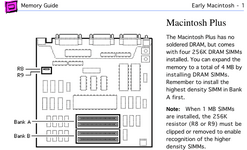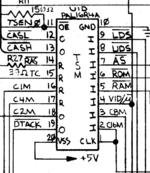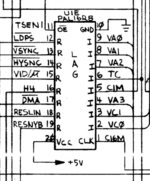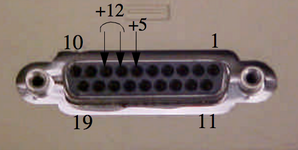embBambooLounge
Member
Thank you to everyone that helped me get the analog board working after chasing down and replacing 5 parts (other than capacitors). On one of the tests I ran (https://68kmla.org/bb/index.php?thr...-help-r2-and-r3-burning-up.44175/#post-485518) the board made this long chime and I haven't been able to get it to do anything else since then. My guess is that at some point an over voltage may have been sent down the board but I am not sure. When I start the Mac I get this extended chime that does finally stop. I am getting nothing on the screen even if I turn the brightness way up (although I can hear the high voltage running and see the glow of the filament in the tube). Using my oscilloscope it seems as though the processor is running and the ROMs are being read. I am not seeing much on the video out from the logic board and only seem to have horizontal sync. Please note I recently bought the oscilloscope so my knowledge here is limited.
I had read in a few posts that the 74LS166 ICs in U10F and U11F could be faulty and noticed they were tied to ground on PIN6 (CLOCK INHIBIT) so I pulled them out to see if that would change anything but still received the long extended chime. I didn't see any other other LS chips tied to ground on any other pins so my thought was perhaps one of them went bad. I don't have a working board to cross reference so it was a shot in the dark.
I've attached a video with the chime in case anyone has heard it before.
As always thank you for any tips to follow!
I had read in a few posts that the 74LS166 ICs in U10F and U11F could be faulty and noticed they were tied to ground on PIN6 (CLOCK INHIBIT) so I pulled them out to see if that would change anything but still received the long extended chime. I didn't see any other other LS chips tied to ground on any other pins so my thought was perhaps one of them went bad. I don't have a working board to cross reference so it was a shot in the dark.
I've attached a video with the chime in case anyone has heard it before.
As always thank you for any tips to follow!




